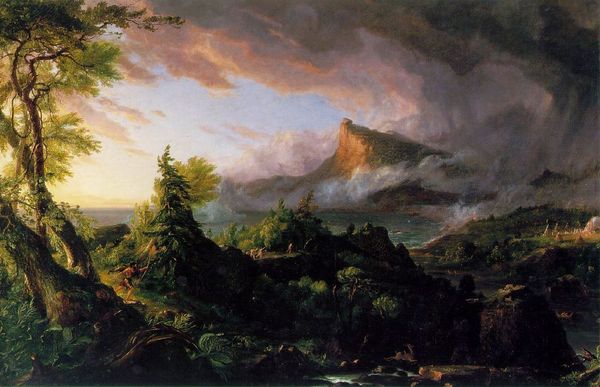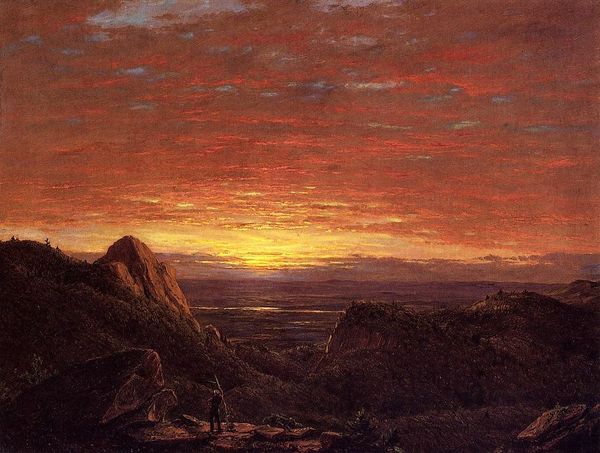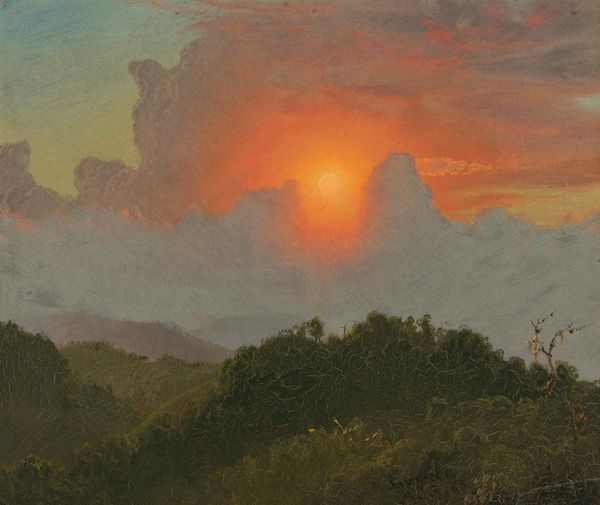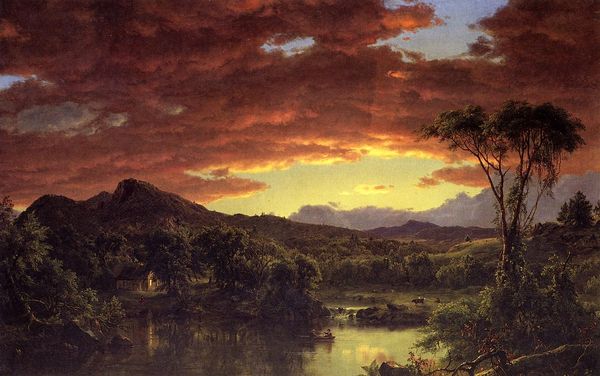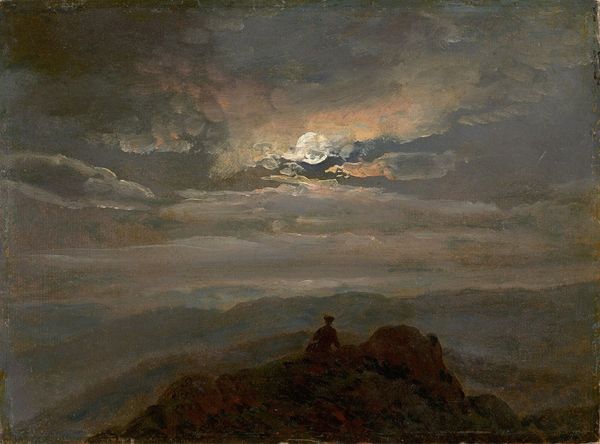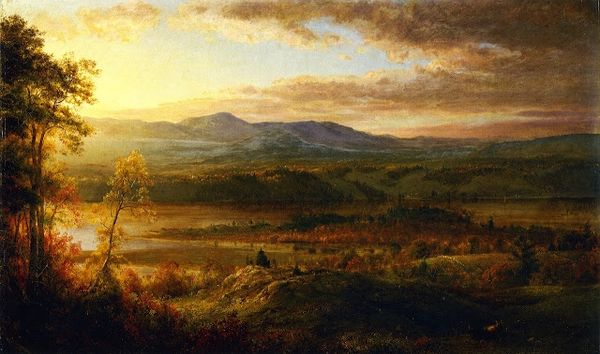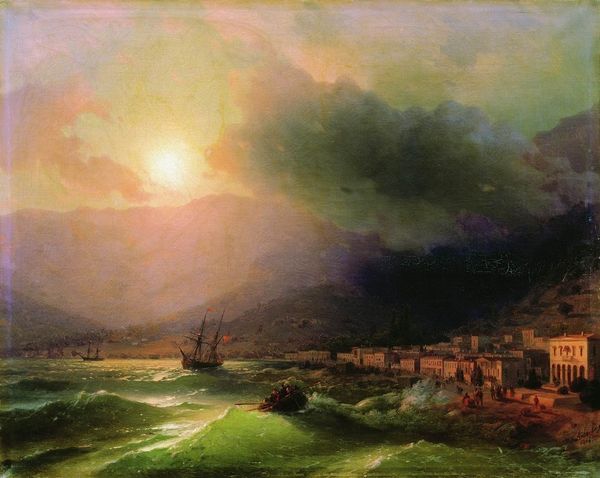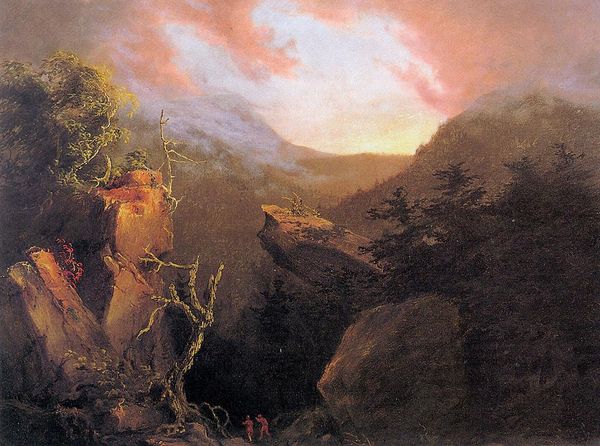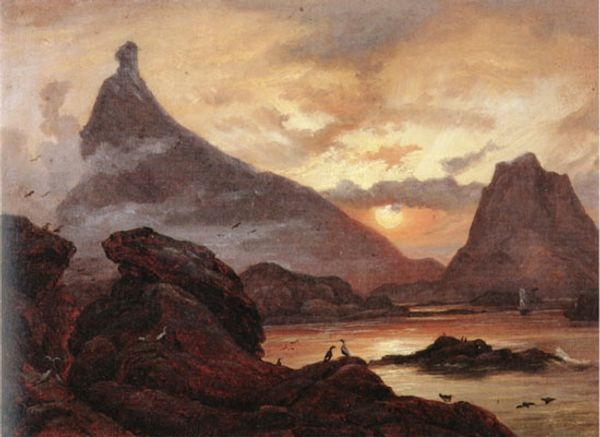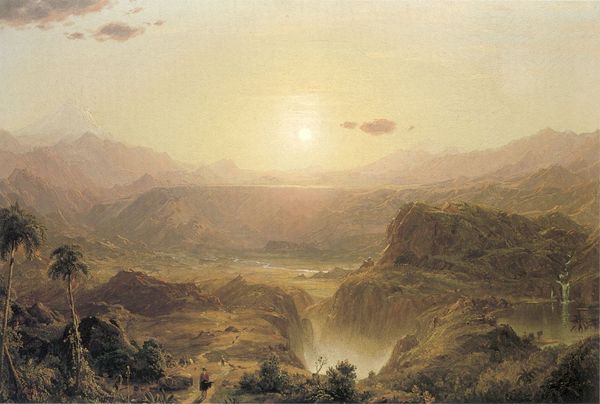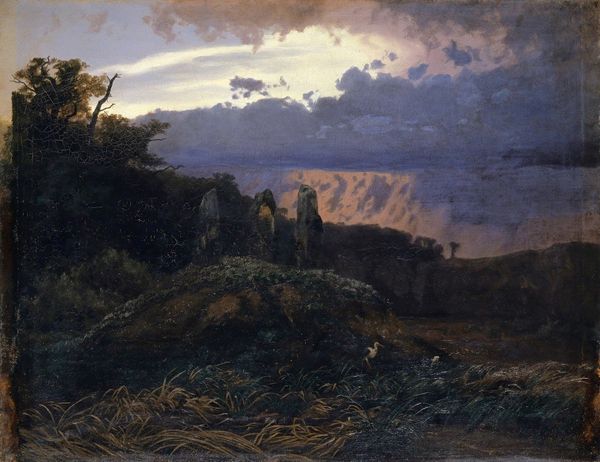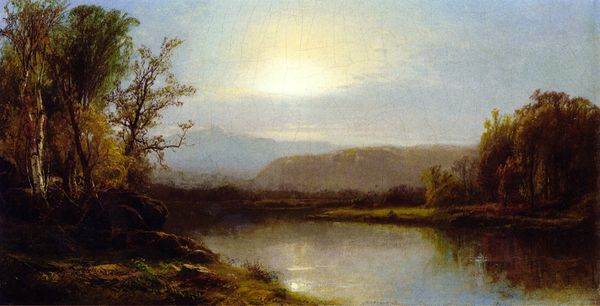
painting, oil-paint
#
painting
#
oil-paint
#
landscape
#
oil painting
#
romanticism
#
history-painting
#
realism
Dimensions: 79.3 x 123.8 cm
Copyright: Public domain
Frederic Edwin Church, a key figure in the Hudson River School, created “After the Glow” using oil paints on canvas. Here, Church utilized the materiality of oil paint to render a sublime landscape. Consider the way he builds up layers of pigment to capture the textures of the natural world, from the dense foliage in the foreground to the hazy mountains in the distance. Look at how the artist manipulates the viscous medium to evoke the luminosity of the post-sunset sky. The oil paint, ground from pigment and linseed oil, allowed for the slow, meticulous rendering of light effects and atmospheric perspective, key features of the artist's style. Church, and other landscape painters, were deeply influenced by the 19th-century’s changing relationship to nature, as it became both a source of spiritual inspiration and a resource to be exploited. The painting’s meticulous details reflect not only Church’s skill, but also the cultural values placed on observation and documentation during this period of industrial expansion and exploration. Paying attention to materials and making allows us to see these paintings not just as beautiful vistas, but as cultural artifacts embedded in broader social and economic contexts.
Comments
No comments
Be the first to comment and join the conversation on the ultimate creative platform.
